WORLD TRAVEL NEWS ARTICLE
CROATIA
'ISTRIA'
Croatia is famous for the beautiful city of Dubrovnik. But Julia Berg-Warren set out to discover what the region of Istria also had to offer.
The Dalmatia region of Croatia needs no introduction. The world famous walled city of Dubrovnik sits at the southern end of Dalmatia and is now a favourite spot for people from all over the world and from all walks of life. Celebrities and the jet-set have also discovered Dubrovnik and sometimes, the private jet parking area should put up the “full” sign.
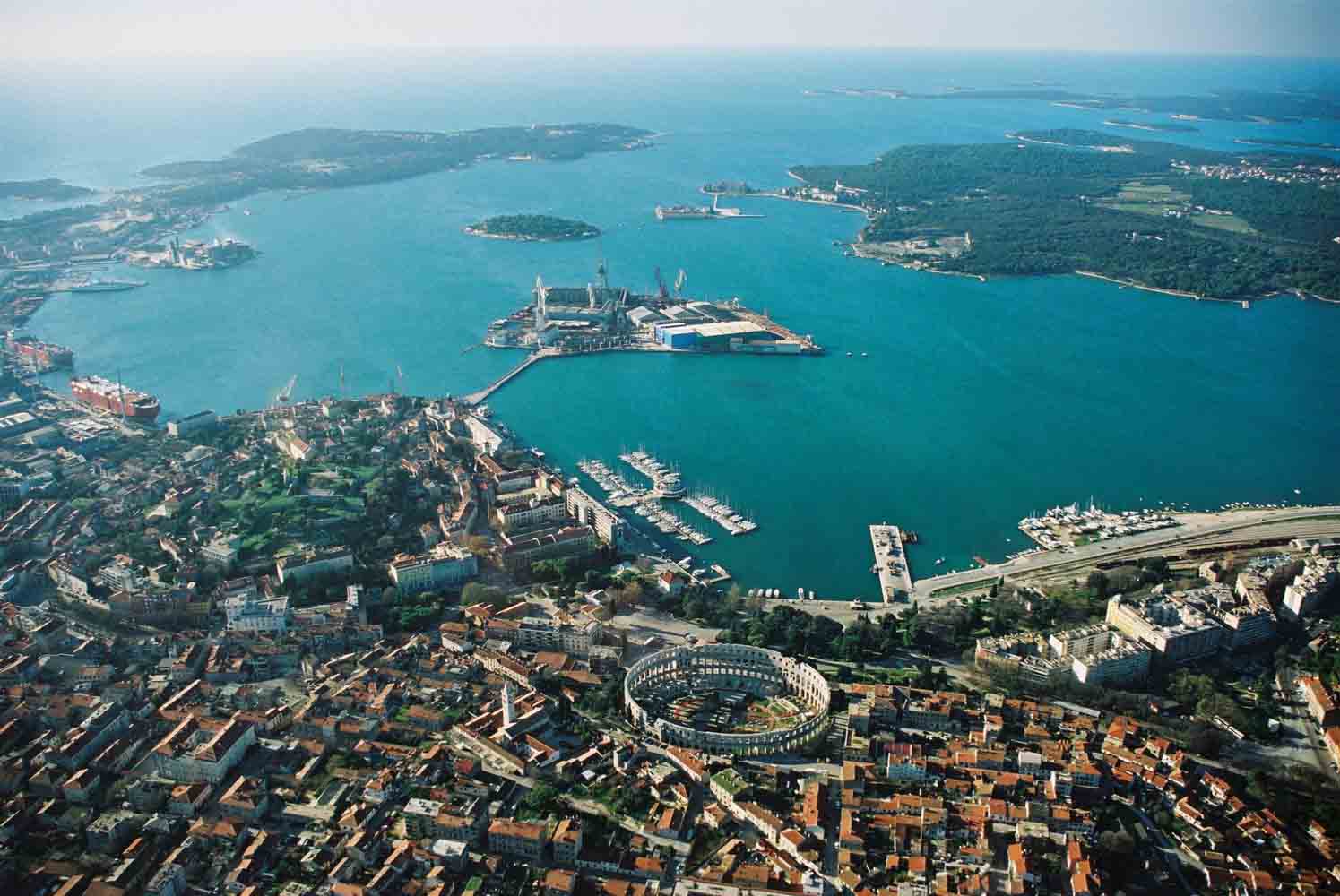
Pula from the air
Right at the other end of Croatia, the heart shaped peninsula that is the Istria region, so close to Italy, gets less fuss. It’s curious since Istria accounts for one third of tourist arrivals to Croatia and Venice is just a two hour catamaran ride away from the resorts of Poreč, Rovinj and from the city of Pula.
Istria has that same sparkling clean Adriatic sea, white pebbled beaches fringed with pine trees, picture book medieval hilltop villages, historic heritage treasures and great watersports but it is for an aspect of holidaying a touch more earthy that Istria is now beginning to turn heads. Food and drink: the subject that is bringing the world’s “lifestyle addicts” into a state of daily frenzy.

The Adriatic Sea coast of Croatia
If arriving in this part of Croatia by air, most people will fly into either Pula airport or Trieste in Italy. Within half an hour or so of leaving these airports, the words “Roads of Istrian wine” (or olive oil) come into sight.
Wine and olive oil have been produced here since Roman times, maybe even earlier when the Histria tribe were in residence. Beneath Pula’s famous 1st century amphitheatre there is an excellent exhibition depicting the Romans’ interest in wine and olive oil.
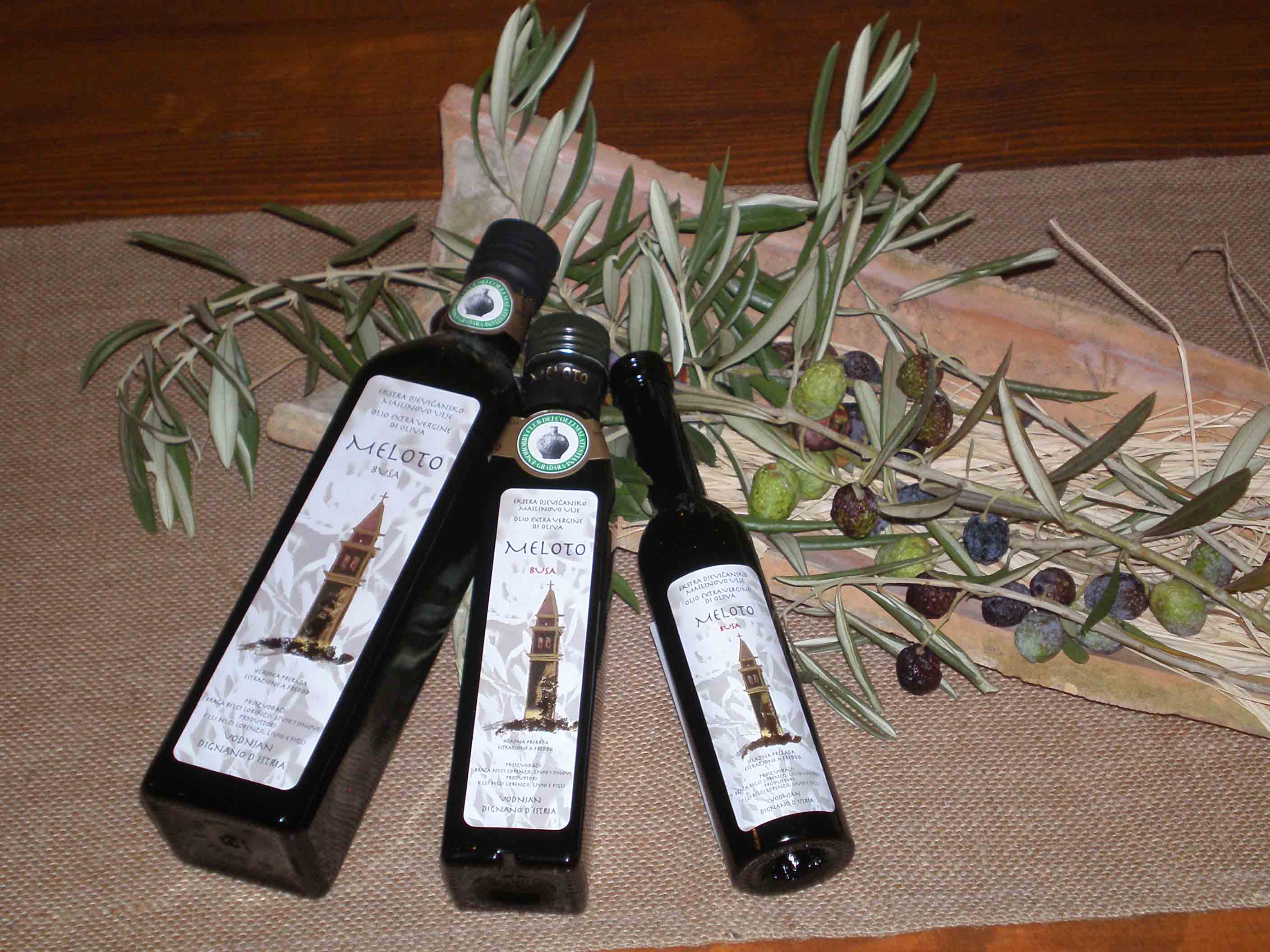
Istria olive oil
But this isn’t just any old wine and oil. Istrian wines are winning awards across Europe and were featured in the famous Decanter World Wine Awards in 2009 and 2010.Istrian olive oil is now being exported to France and is on sale in Paris to a nation that truly knows about food.
Istria is a beauty, small and understated. Istrians are clever people who can make jokes and can take one or two about themselves too. The symbol of Istria is the goat and appearson all brochures and promotional material. Each year, Istria holds a “most beautiful goat/Beauty Queen” competition and goat owners across the peninsula enter their animal into this pageant of cloven hoofed cuties. The winner gets a free holiday on the Brijuni islands, an archipelago of fourteen islands a twenty minute boat ride away from Fažana near Pula.
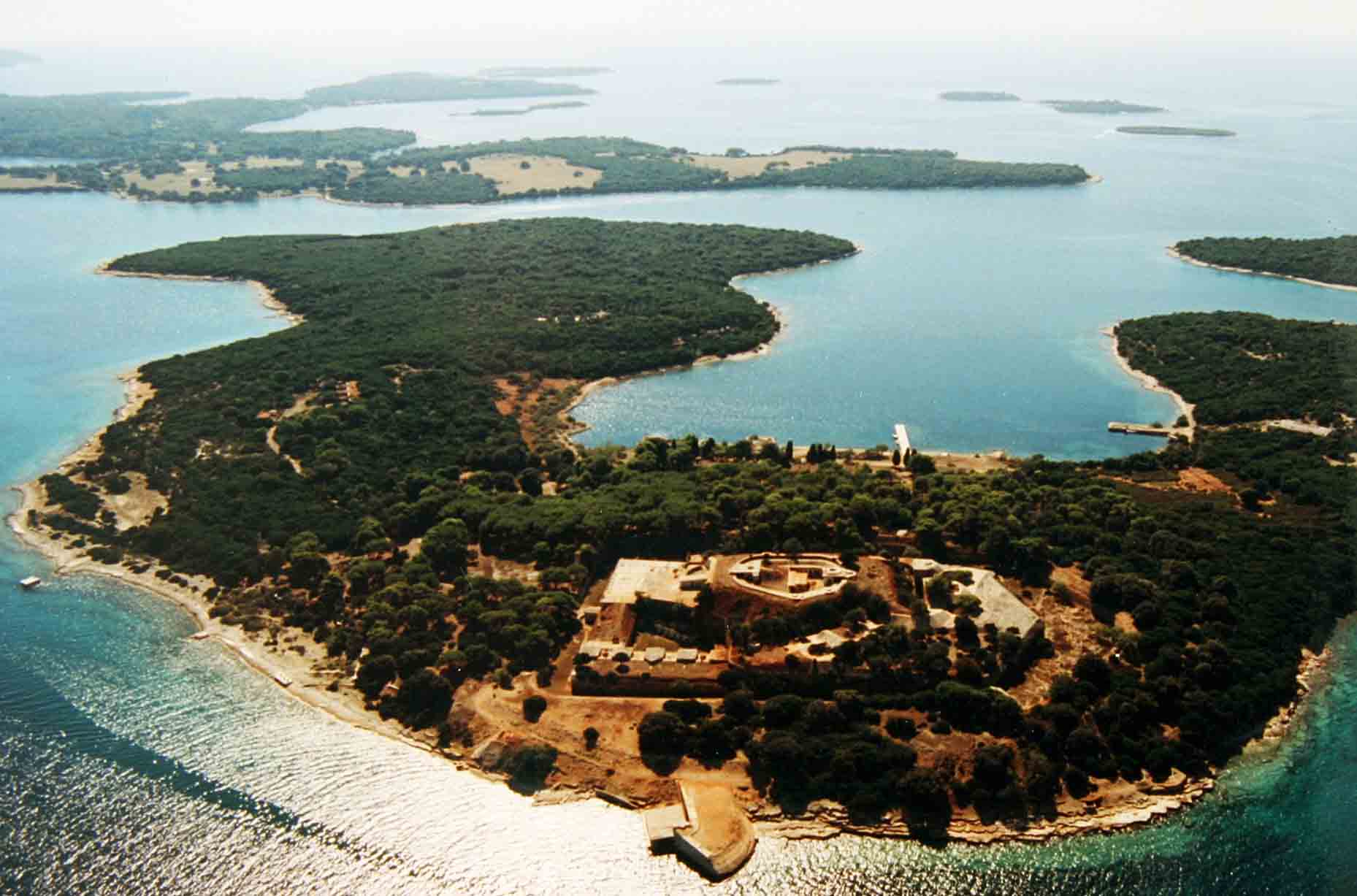
The Brijuni islands
The leader of the former Yugoslavia, Marshall Tito had his official residence on Brijuni and he would often try to spend half the year on this idyllic hideaway where he welcomed heads of state and film stars including President Eisenhower, Her Majesty Queen Elizabeth II, Sophia Loren, Elizabeth Taylor, Richard Burton and others.
Whether the winning 'most beautiful goat' is actually granted a six month stay of execution is never guaranteed. When I visited last summer, Tihomir, one of the animal carers told me that the 2010 winner had fallen in love with a permanent resident, a young lady caprineand, and he was hopeful that the lovers might be allowed a little longer together. Nice story. Istrians like a reason to smile.

Fazana beach
Irrespective of who or what you are, visitors reach Brijuni from Fazana, a pretty waterfront village with a long tradition of sardine fishing. There’s a sardine academy, a sardine festival, a sardine monument on the seafront and in July and August, visitors can go out fishing at night with local fishermen. Several times in the high season there are Fisherman’s Nights parties along the quayside where the local catch is cooked simply and served up with local beer or wine for just a few kuna (the Croatian currency).
Fish is the big gourmet story on the coast with many varieties regularly offered on daily menus: Adriatic Blue, tuna, amberjack, sea bass, sole and a superb selection of seafood including mussels, langoustines and oysters.
The oysters come from the famous Lim Fjord, located on the west coast between Pula and Rovinj. Here, a proper Norwegian looking fjord was formed when the Istrian coast sank during the last Ice Age. It is nine kilometres long and a mix of fresh and sea water where oysters, clams and mussels thrive. There are two restaurants here, the Viking and the Fjord. Go there in early evening when most of the tourist buses have departed and the sun is setting.
Istrian food producers, winemakers and chefs are rightly proud of their raw materials and are supporting a return to preparing traditional foods. The Istrian Tourist Board’s initiative of the self-drive wine and olive oil roads idea is taking visitors into the countryside on a journey of gourmet discovery and, so far, feedback is good. Istria is easy to get around and nowhere is very far away.
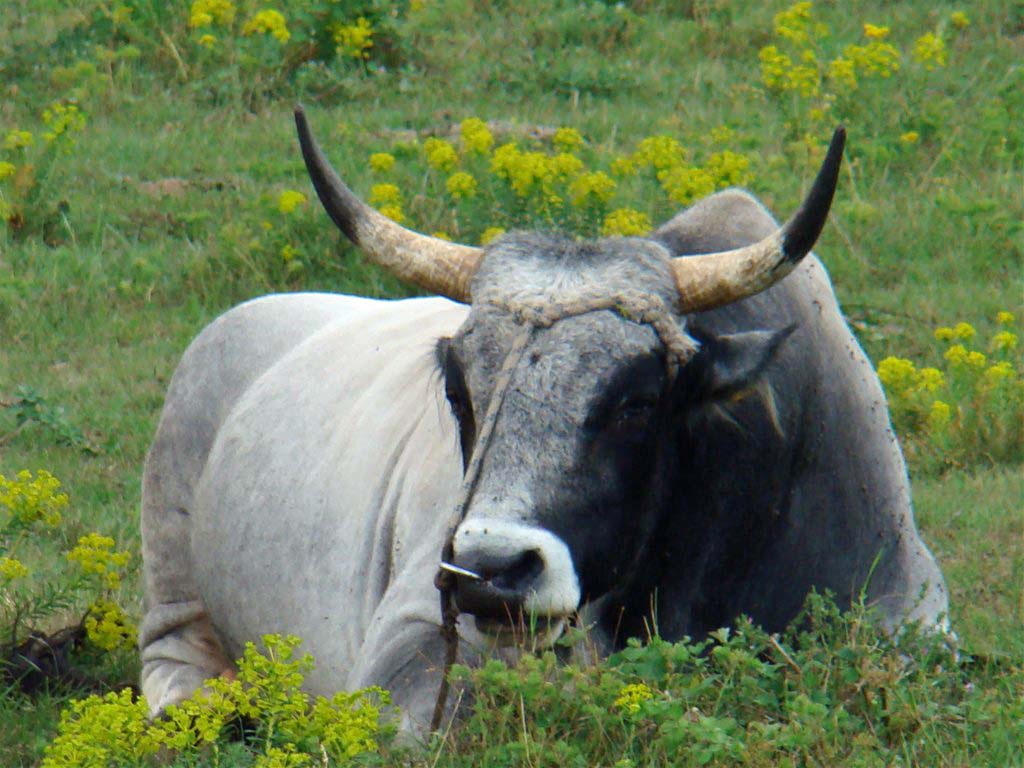
The Istrian Boskarin
Here and there the symbol of something resembling a buffalo appears on road signs. This is the Istrian “boskarin”, a huge, bull type creature whose meat used to be a local speciality until industrialisation appeared and the animal almost became extinct. Before 1945 there were around 40,000 boskarin in Istria, in 1996 just 40 or so remained and now there are almost 1,000 back in Istrian fields. It’s a real labour of love and restaurants work hard to be awarded a special certificate which proves that the establishment is fit to prepare and serve boskarin dishes “in the proper way” as everyone told me.
One such place is Kantinarestarant in Pula which serves an array of Croatian style tapas dishes and a number of main courses featuring boskarin. Add to this a wine cellar containing more than five hundred wines and you can have a wonderful evening here. Also in Pula is Valsabbion, an award winning restaurant serving highly creative dishes with a touch of theatre about them: seafood risotto in whole parmesan cheeses, silver tubes of seafood sauce to squeeze on calamari and some of the best olive oil tasting options anywhere in the region.
Another famous award winner is to be found inland in Istria in the tiny village of Livade. It was here in 1995 that Mr Giancarlo Zigante was out hunting for truffles with his dog Diana when together they found an enormous white truffle weighing 1.31 kilos thereby guaranteeing Giancarlo a place in the Guinness Book of Records and an endless stream of diners to his restaurant. Here, the truffle is the key ingredient, even in ice cream. Diana is now residing in Istria’s doggie heaven, but never forgotten.
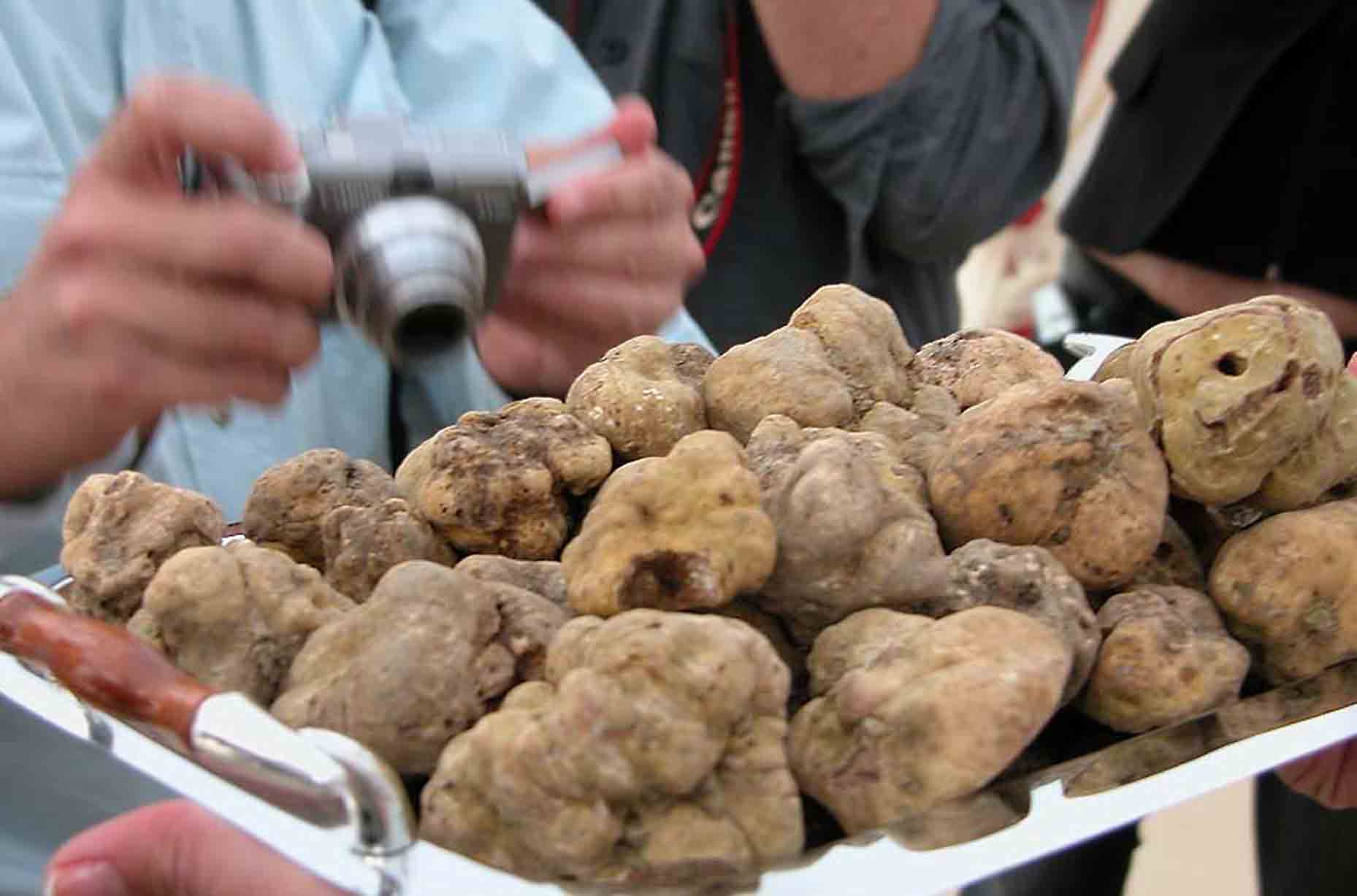
Livade truffles
Istrian soil provides perfect conditions for winemakers and the Teran red and Malvasia whites are unpretentious and usually smooth. Festivals in celebration of asparagus, mushrooms, sardines, truffles (of course), wonderful Istrianprŝut (ham) made without smoke, nitrates or nitrites, shiny green olive oil for dipping with local bread, stories of goats and bulls and wonderful dinners in konobas (simple tavernas) or in fine dining restaurants.
Is it any wonder that Istrians smile?
Travel Information:
Ryanair flies from London Stansted to Trieste year round and to Pula between Apri & October, www.ryanair.com Thomson Airways flies from London Gatwick to Pula from May to September, www.thomson.co.uk/flights, British Airways offer year round flights from London Gatwick to Venice, for schedules and bookings click on the British Airways advertisement on this page.
For more detailsed information please visit www.istria-gourmet.com
You may also like to read
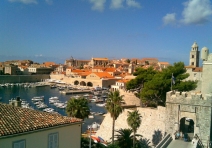
CROATIA - DALMATIAN FOOTSTEPS
Tour-smart's Editor Anna introduces us to the charms of the Dalmatian coast in her travel through four countries.
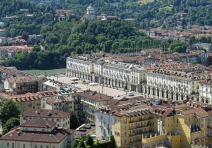
ITALY - TOURING TURIN
Touring Turin with Tour-smart is a joy as Tim Ware steers us around this interesting city vacation destination.

Comments